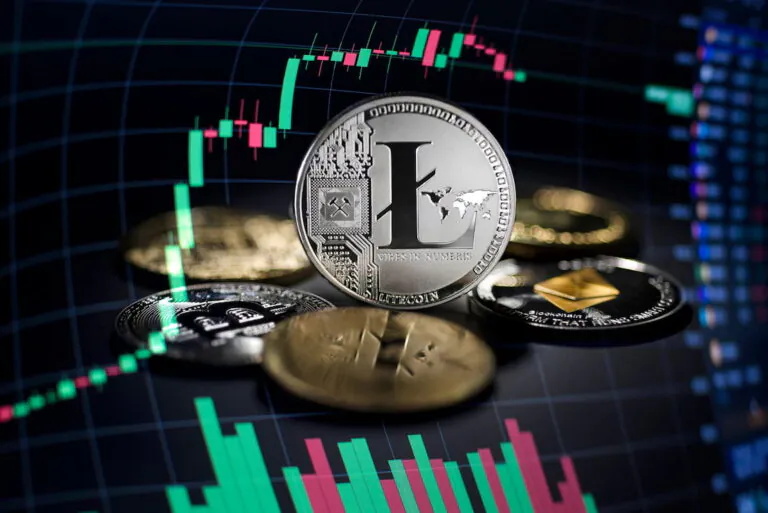Litecoin is one of the first open-source altcoins based on the original Bitcoin code. It was initially a strong competitor to the first cryptocurrency. However, as the cryptocurrency market expanded, Litecoin’s popularity gradually declined.

USDP from Pax Dollar: Key Characteristics and Potential
Pax Dollar (USDP) represents an innovative stable cryptocurrency closely tied to the value of the US dollar. Developed by Paxos, this token ensures secure financial transactions in the world of cryptocurrencies, preserving asset value without the noticeable price fluctuations inherent in many other digital currencies. USDP serves as a digital equivalent of the US dollar, ensuring convenience in use and transparency through Paxos’ strict control and regulation.
Who Created the Coin?
Paxos, a leading company in financial technology and blockchain, created the digital currency Pax Dollar (USDP). As a regulated firm, Paxos instills high levels of trust and stability in USDP. It aims to provide users with the ability to operate in the financial sphere, ensuring stability and reliability of digital assets linked to the US dollar. Actively working on innovative financial products that combine the benefits of cryptocurrencies with traditional financial instruments, Paxos introduced USDP as one of the key products contributing to stability and transparency in the cryptocurrency market.
What’s Special about Pax Dollar?
Pax Dollar (USDP) stands out for its ability to combine the advantages of cryptocurrencies with the stability and price resilience typical of traditional financial instruments. Here are a few key features:
- Price Stability. USDP is pegged to the US dollar, providing stability and price predictability, avoiding significant fluctuations typical of most cryptocurrencies.
- Regulation and Oversight. Pax Dollar is created by a company subject to strict regulation, ensuring transparency and trust while maintaining high security and compliance standards.
- Liquidity and Ease of Use. USDP offers users liquidity and the ability to quickly and securely transfer funds within the cryptocurrency ecosystem.
- Innovative Approach. Paxos continually works on improving its products, including USDP, offering new innovative solutions in the field of financial technology.
Pax Dollar is an important asset for those who value stability in the world of cryptocurrencies and seek convenient and secure means of storing and transferring digital assets.
How Many Pax Dollar (USDP) Coins are in Circulation?
As of the time of writing, the total number of circulating Pax Dollar (USDP) coins is 352.85M. The market capitalization of this digital asset is $352.8M. USDP ranks 136st in the global cryptocurrency ranking. The daily trading volume reaches $0.9999 million. The current price of Pax Dollar steadily holds at $1.00, with a change observed over the last 24 hours at -0.16%. These indicators signify the stability and attractiveness of this cryptocurrency for users and investors in the market.
How is Network Security Ensured?
The security of the Pax Dollar (USDP) network is ensured through several key mechanisms:
- Storage Technologies. Paxos utilizes advanced methods for storing digital assets, including multi-signature and data encryption, ensuring user asset protection from potential threats.
- Regulation and Compliance. As a regulated firm, Paxos strictly adheres to regulatory standards and requirements, including data protection laws and fraud prevention, ensuring a high level of operational security.
- Audits and Verification. Paxos’ system undergoes regular audits and checks by independent auditors and information security experts to confirm the reliability and security of its infrastructure.
- Decentralization and Blockchain. The use of blockchain technology helps ensure transparency and immutability of transactions, making the network more resistant to interference and ensuring the reliability of operations.
This comprehensive approach to network security significantly strengthens the protection of users’ digital assets and contributes to establishing a high level of trust in this cryptocurrency.
Conclusion
Pax Dollar’s market capitalization of $352.32 million and its position at #136 in the global ranking indicates its significant popularity and demand among users. The average daily trading volume of 2.42 million demonstrates active trading and interest in this cryptocurrency.
USDP represents significant potential to become an important tool for conducting secure and instant transactions in the cryptocurrency sphere. Thanks to Paxos’ innovative approach, this digital currency ensures price stability and operational reliability, making it potentially sought-after in the world of financial technology.


